INTEGRATED TRACKING, CLASSIFICATION, AND SENSOR MANAGEMENT: THEORY AND APPLICATIONS
CONTENTS
PREFACE
CONTRIBUTORS
PART I: FILTERING
1. Angle-Only Filtering in Three Dimensions
1.1 Introduction
1.2 Statement of Problem
1.3 Tracker and Sensor Coordinate Frames
1.4 Coordinate Systems for Target and Ownship States
1.4.1 Cartesian Coordinates for State Vector and Relative State Vector
1.4.2 Modified Spherical Coordinates for Relative State Vector
1.5 Dynamic Models
1.5.1 Dynamic Model for State Vector and Relative State Vector in Cartesian Coordinates
1.5.2 Dynamic Model for Relative State Vector in Modified Spherical Coordinates
1.6 Measurement Models
1.6.1 Measurement Model for Relative Cartesian State
1.6.2 Measurement Model for Modified Spherical Coordinates
1.7 Filter Initialization
1.7.1 Initialization of Relative Cartesian Coordinates
1.7.2 Initialization of Modified Spherical Coordinates
1.8 Extended Kalman Filters
1.9 Unscented Kalman Filters
1.10 Particle Filters
1.11 Numerical Simulations and Results
1.12 Conclusions
Appendix1A Derivations for Stochastic Differential Equations in MSC
Appendix1B Transformations Between Relative Cartesian Coordinates and MSC
Appendix1C Filter Initialization for Relative Cartesian Coordinates and MSC
References
2. Particle Filtering Combined with Interval Methods for Tracking Applications
2.1 Introduction
2.2 Related Works
2.3 Interval Analysis
2.3.1 Basic Concepts
2.3.2 Inclusion Functions
2.3.3 Constraint Satisfaction Problems
2.3.4 Contraction Methods
2.4 Bayesian Filtering
2.5 Box Particle Filtering
2.5.1 Main Steps of the Box Particle Filter
2.6 Box Particle Filtering Derived from the Bayesian Inference Using a Mixture of Uniform Probability Density Functions
2.6.1 Time Update Step
2.6.2 Measurement Update Step
2.7 Box-PF Illustration over a Target Tracking Example
2.7.1 Simulation Set-Up
2.8 Application for a Vehicle Dynamic Localization Problem
2.9 Conclusions
References
3. Bayesian Multiple Target Filtering Using Random Finite Sets
3.1 Introduction
3.2 Overview of the Random Finite Set Approach to Multitarget Filtering
3.2.1 Single-Target Filtering
3.2.2 Random Finite Set and Multitarget Filtering
3.2.3 Why Random Finite Set for Multitarget Filtering?
3.3 Random Finite Sets
3.3.1 Probability Density
3.3.2 Janossy Densities
3.3.3 Belief Functional and Density
3.3.4 The Probability Hypothesis Density
3.3.5 Examples of RFS
3.4 Multiple Target Filtering and Estimation
3.4.1 Multitarget Dynamical Model
3.4.2 Multitarget Observation Model
3.4.3 Multitarget Bayes Recursion
3.4.4 Multitarget State Estimation
3.5 Multitarget Miss Distances
3.5.1 Metrics
3.5.2 Hausdorff Metric
3.5.3 Optimal Mass Transfer (OMAT) Metric
3.5.4 Optimal Subpattern Assignment (OSPA) Metric
3.6 The Probability Hypothesis Density (PHD) Filter
3.6.1 The PHD Recursion for Linear Gaussian Models
3.6.2 Implementation Issues
3.6.3 Extension to Nonlinear Gaussian Models
3.7 The Cardinalized PHD Filter
3.7.1 The CPHD Recursion for Linear Gaussian Models
3.7.2 Implementation Issues
3.7.3 The CPHD Filter for Fixed Number of Targets
3.8 Numerical Examples
3.9 MeMBer Filter
3.9.1 MeMBer Recursion
3.9.2 Multitarget State Estimation
3.9.3 Extension to Track Propagation
3.9.4 MeMBer Filter for Image Data
3.9.5 Implementations
References
4. The Continuous Time Roots of the Interacting Multiple Model Filter
4.1 Introduction
4.1.1 Background and Notation
4.2 Hidden Markov Model Filter
4.2.1 Finite-State Markov Process
4.2.2 SDEs Having a Markov Chain Solution
4.2.3 Filtering a Hidden Markov Model (HMM)
4.2.4 Robust Versions of the HMM Filter
4.3 System with Markovian Coefficients
4.3.1 The Filtering Problem Considered
4.3.2 Evolution of the Joint Conditional Density
4.3.3 Evolution of the Conditional Density of xt Given θt
4.3.4 Special Cases
4.4 Markov Jump Linear System
4.4.1 The Filtering Problem Considered
4.4.2 Pre-IMM Filter Equations
4.4.3 Continuous-Time IMM Filter
4.4.4 Linear Version of the Pre-IMM Equations
4.4.5 Relation Between Bjork’s Filter and Continuous-Time IMM
4.5 Continuous-Discrete Filtering
4.5.1 The Continuous-Discrete Filtering Problem Considered
4.5.2 Evolution of the Joint Conditional Density
4.5.3 Continuous-Discrete SIR Particle Filtering
4.5.4 Markov Jump Linear Case
4.5.5 Continuous-Discrete IMM Filter
4.6 Concluding Remarks
Appendix4A Differentiation Rule for Discontinuous Semimartingales
Appendix4B Derivation of Differential for Rt (θ)
References
PART II: MULTITARGET MULTISENSOR TRACKING
5. Multitarget Tracking Using Multiple Hypothesis Tracking
5.1 Introduction
5.2 Tracking Algorithms
5.2.1 Tracking with Target Identity (or Track Label)
5.2.2 Tracking without Target Identity (or Track Label)
5.3 Track Filtering
5.3.1 Dynamic Models
5.3.2 Measurement Models
5.3.3 Single Model Filter for a Nonmaneuvering Target
5.3.4 Filtering Algorithms
5.3.5 Multiple Switching Model Filter for a Maneuvering Target
5.4 MHT Algorithms
5.5 Hybrid-State Derivations of MHT Equations
5.6 The Target-Death Problem
5.7 Examples for MHT
5.7.1 Example 1: N-Scan Pruning in Track-Oriented MHT
5.7.2 Example 2: Maneuvering Target in Heavy Clutter
5.8 Summary
References
6. Tracking and Data Fusion for Ground Surveillance
6.1 Introduction to Ground Surveillance
6.2 GMTI Sensor Model
6.2.1 Model of the GMTI Clutter Notch
6.2.2 Signal Strength Measurements
6.3 Bayesian Approach to Ground Moving Target Tracking
6.3.1 Bayesian Tracking Filter
6.3.2 Essentials of GMTI Tracking
6.3.3 Filter Update with Clutter Notch
6.3.4 Target Strength Estimation
6.4 Exploitation of Road Network Data
6.4.1 Modeling of Road Networks
6.4.2 Densities on Roads
6.4.3 Application: Precision Targeting
6.4.4 Track-Based Road-Map Extraction
6.5 Convoy Track Maintenance Using Random Matrices
6.5.1 Object Extent Within the Bayesian Framework
6.5.2 Road-Map Assisted Convoy Track Maintenance
6.5.3 Selected Numerical Examples
6.6 Convoy Tracking with the Cardinalized Probability Hypothesis Density Filter
6.6.1 Gaussian Mixture CPHD Algorithm
6.6.2 Integration of Digital Road Maps
6.6.3 Target State Dependent Detection Probability
6.6.4 Exemplary Results for Small Convoys
References
7. Performance Bounds for Target Tracking: Computationally Efficient Formulations and Associated Applications
7.1 Introduction
7.2 Bayesian Performance Bounds
7.2.1 The Estimation Problem
7.2.2 A General Class of Lower Bounds
7.2.3 Efficient Fixed Dimensionality Recursions
7.3 PCRLB Formulations in Cluttered Environments
7.3.1 Measurement Model
7.3.2 Information Reduction Factor Approach
7.3.3 Measurement Sequence Conditioning Approach
7.3.4 Measurement Existence Sequence Conditioning Approach
7.3.5 Calculation of the Information Reduction Factors
7.3.6 Relationships Between the Various Performance Bounds
7.4 An Approximate PCRLB for Maneuevring Target Tracking
7.4.1 Motion Model
7.4.2 Best-Fitting Gaussian Approach
7.4.3 Recursive Computation of Best-Fitting Gaussian Approximation
7.5 A General Framework for the Deployment of Stationary Sensors
7.5.1 Introduction
7.5.2 Interval Between Deployments
7.5.3 Use of Existing Sensors
7.5.4 Locations and Number of New Sensors
7.5.5 Performance Measure
7.5.6 Efficient Search Technique
7.5.7 Example—Sonobuoy Deployment in Submarine Tracking
7.6 UAV Trajectory Planning
7.6.1 Scenario Overview
7.6.2 Measure of Performance
7.6.3 One-Step-Ahead Planning
7.6.4 Two-Step-Ahead Planning
7.6.5 Adaptive Horizon Planning
7.6.6 Simulations
7.7 Summary and Conclusions
References
8. Track-Before-Detect Techniques
8.1 Introduction
8.1.1 Historical Review of TBD Approaches
8.1.2 Limitations of Conventional Detect-then-Track
8.2 Models
8.2.1 Target Model
8.2.2 Sensor Model
8.3 Baum Welch Algorithm
8.3.1 Detection
8.3.2 Parameter Selection
8.3.3 Complexity Analysis
8.3.4 Summary
8.4 Dynamic Programming: Viterbi Algorithm
8.4.1 Parameter Selection
8.4.2 Complexity Analysis
8.4.3 Summary
8.5 Particle Filter
8.5.1 Parameter Selection
8.5.2 Complexity Analysis
8.5.3 Summary
8.6 ML-PDA
8.6.1 Optimization Methods
8.6.2 Validation
8.6.3 Summary
8.7 H-PMHT
8.7.1 Efficient Two-Dimensional Implementation
8.7.2 Nonlinear Gaussian Measurement Function
8.7.3 Track Management
8.7.4 Summary
8.8 Performance Analysis
8.8.1 Simulation Scenario
8.8.2 Measures of Performance
8.8.3 Overall ROC
8.8.4 Per-Frame ROC
8.8.5 Estimation Accuracy
8.8.6 Computation Requirements
8.9 Applications: Radar and IRST Fusion
8.10 Future Directions
References
9. Advances in Data Fusion Architectures
9.1 Introduction
9.2 Dense-Target Scenarios
9.3 Multiscale Sensor Scenarios
9.4 Tracking in Large Sensor Networks
9.5 Multiscale Objects
9.6 Measurement Aggregation
9.7 Conclusions
References
10. Intent Inference and Detection of Anomalous Trajectories: A Metalevel Tracking Approach
10.1 Introduction
10.1.1 Examples of Metalevel Tracking
10.1.2 SCFGs and Reciprocal Markov Chains
10.1.3 Literature Survey
10.1.4 Main Results
10.2 Anomalous Trajectory Classification Framework
10.2.1 Trajectory Classification in Radar Tracking
10.2.2 Radar Tracking System Overview
10.3 Trajectory Modeling and Inference Using Stochastic Context-Free Grammars
10.3.1 Review of Stochastic Context-Free Grammars
10.3.2 SCFG Models for Anomalous Trajectories
10.3.3 Bayesian Signal Processing of SCFG Models
10.4 Trajectory Modeling and Inference Using Reciprocal Processes (RP)
10.5 Example 1: Metalevel Tracking for GMTI Radar
10.6 Example 2: Data Fusion in a Multicamera Network
10.7 Conclusion
References
PART III: SENSOR MANAGEMENT AND CONTROL
11. Radar Resource Management for Target Tracking—A Stochastic Control Approach
11.1 Introduction
11.1.1 Approaches to Radar Resource Management
11.1.2 Architecture of Radar Resource Manager
11.1.3 Organization of Chapter
11.2 Problem Formulation
11.2.1 Macro and Micromanager Architecture
11.2.2 Target and Measurement Model
11.2.3 Micromanagement to Maximize Mutual Information of Targets
11.2.4 Formulation of Micromanagement as a Multivariate POMDP
11.3 Structural Results and Lattice Programming for Micromanagement
11.3.1 Monotone Policies for Micromanagement with Mutual Information Stopping Cost
11.3.2 Monotone POMDP Policies for Micromanagement
11.3.3 Radar Macromanagement
11.4 Radar Scheduling for Maneuvering Targets Modeled as Jump Markov Linear System
11.4.1 Formulation of Jump Markov Linear System Model
11.4.2 Suboptimal Radar Scheduling Algorithms
11.5 Summary
References
12. Sensor Management for Large-Scale Multisensor-Multitarget Tracking
12.1 Introduction
12.1.1 Sensor Management
12.1.2 Centralized Tracking
12.1.3 Distributed Tracking
12.1.4 Decentralized Tracking
12.1.5 Organization of the Chapter
12.2 Target Tracking Architectures
12.2.1 Centralized Tracking
12.2.2 Distributed Tracking
12.2.3 Decentralized Tracking
12.3 Posterior Cram´er–Rao Lower Bound
12.3.1 Multitarget PCRLB for Centralized Tracking
12.4 Sensor Array Management for Centralized Tracking
12.4.1 Problem Description
12.4.2 Problem Formulation
12.4.3 Solution Technique
12.4.4 Simulation
12.4.5 Simulation Results
12.5 Sensor Array Management for Distributed Tracking
12.5.1 Track Fusion
12.5.2 Performance of Distributed Tracking with Full Feedback at Every Measurement Step
12.5.3 PCRLB for Distributed Tracking
12.5.4 Problem Description
12.5.5 Problem Formulation
12.5.6 Solution Technique
12.5.7 Simulation Results
12.6 Sensor Array Management for Decentralized Tracking
12.6.1 PCRLB for Decentralized Tracking
12.6.2 Problem Description
12.6.3 Problem Formulation
12.6.4 Solution Technique
12.6.5 Simulation Results
12.7 Conclusions
Appendix12A Local Search
Appendix 12B Genetic Algorithm
Appendix 12C Ant Colony Optimization
References
PART IV: ESTIMATION AND CLASSIFICATION
13. Efficient Inference in General Hybrid Bayesian Networks for Classification
13.1 Introduction
13.2 Message Passing: Representation and Propagation
13.2.1 Unscented Transformation
13.2.2 Unscented Message Passing
13.3 Network Partition and Message Integration for Hybrid Model
13.3.1 Message Integration for Hybrid Model
13.4 Hybrid Message Passing Algorithm for Classification
13.5 Numerical Experiments
13.5.1 Experiment Method
13.5.2 Experiment Results
13.5.3 Complexity of HMP-BN
13.6 Concluding Remarks
References
14. Evaluating Multisensor Classification Performance with Bayesian Networks
14.1 Introduction
14.2 Single-Sensor Model
14.2.1 A New Approach for Quantifying Classification Performance
14.2.2 Efficient Estimation of the Global Classification Matrix
14.2.3 The Global Classification Matrix: Some Experiments
14.2.4 Sensor Design Quality Metrics
14.3 Multisensor Fusion Systems—Design and Performance Evaluation
14.3.1 Performance Evaluation of Multisensor Models—Good Sensors
14.3.2 Performance Evaluation of Multisensor Fusion Systems—Not-so-Good Sensors
14.4 Summary and Continuing Questions
Appendix14A Developing a Sensor’s Local Confusion Matrix
Appendix 14B Solving for the Off-Diagonal Elements of the Global Classification Matrix
Appendix 14C A Graph-Theoretic Representation of the Recursive Approach for Estimating the Diagonal Elements of the GCM
Appendix 14C.1 The Binomial Case (n = 2,m = 2)
Appendix 14C.2 The Multinomial Case (n,m > 2)
Appendix14D Designing Monte Carlo Simulations of the GCM
Appendix 14D.1 Single-Sensor GCM
Appendix 14D.2 Multisensor GCM
Appendix 14E Proof of Approximation 1
References
15. Detection and Estimation of Radiological Sources
15.1 Introduction
15.2 Estimation of Point Sources
15.2.1 Model
15.2.2 Source Parameter Estimation
15.2.3 Simulation Results
15.2.4 Experimental Results
15.3 Estimation of Distributed Sources
15.3.1 Model
15.3.2 Estimation
15.3.3 Simulation Results
15.3.4 Experimental Results
15.4 Searching for Point Sources
15.4.1 Model
15.4.2 Sequential Search Using a POMDP
15.4.3 Implementation of the POMDP
15.4.4 Simulation Results
15.4.5 Experimental Results
15.5 Conclusions
References
PART V: DECISION FUSION AND DECISION SUPPORT
16. Distributed Detection and Decision Fusion with Applications to Wireless Sensor Networks
16.1 Introduction
16.2 Elements of Detection Theory
16.3 Distributed Detection with Multiple Sensors
16.3.1 Topology
16.3.2 Conditional Independence Assumption
16.3.3 Dependent Observations
16.3.4 Discussion
16.4 Distributed Detection in Wireless Sensor Networks
16.4.1 Counting Rule in a Wireless Sensor Network with Signal Decay
16.4.2 Performance Analysis: Sensors with Identical Statistics
16.4.3 Performance Analysis: Sensors with Nonidentical Statistics
16.5 Copula-Based Fusion of Correlated Decisions
16.5.1 Copula Theory
16.5.2 System Design Using Copulas
16.5.3 Illustrative Example: Application to Radiation Detection
16.5.4 Remark
16.6 Conclusion
Appendix16A Performance Analysis of a Network with Nonidentical Sensors via Approximations
Appendix 16A.1 Binomial I Approximation
Appendix 16A.2 Binomial II Approximation
Appendix 16A.3 DeMoivre–Laplace Approximation
Appendix 16A.4 Total Variation Distance
References
17. Evidential Networks for Decision Support in Surveillance Systems
17.1 Introduction
17.2 Valuation Algebras
17.2.1 Mathematical Definitions and Results
17.2.2 Axioms
17.2.3 Probability Mass Functions as a Valuation Algebra
17.3 Local Computation in a VA
17.3.1 Fusion Algorithm
17.3.2 Construction of a Binary Join Tree
17.3.3 Inward Propagation
17.4 Theory of Evidence as a Valuation Algebra
17.4.1 Combination
17.4.2 Marginalization
17.4.3 Inferring and Eliciting the Evidential Model
17.4.4 Decision Making
17.5 Examples of Decision Support Systems
17.5.1 Target Identification
17.5.2 Threat Assessment
Appendix17A Construction of a BJT
Appendix 17B Inward Propagation
References
Index
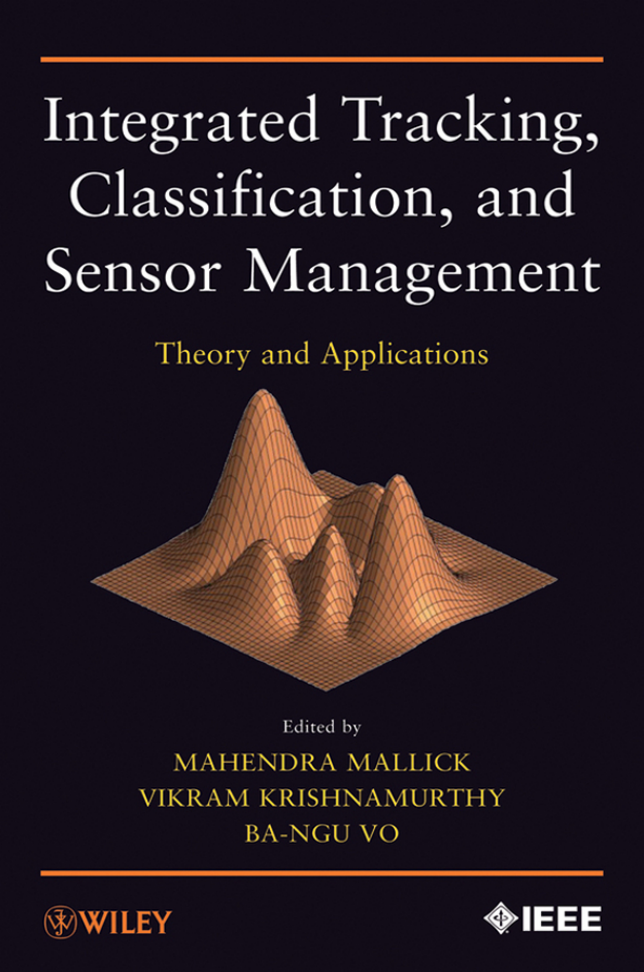

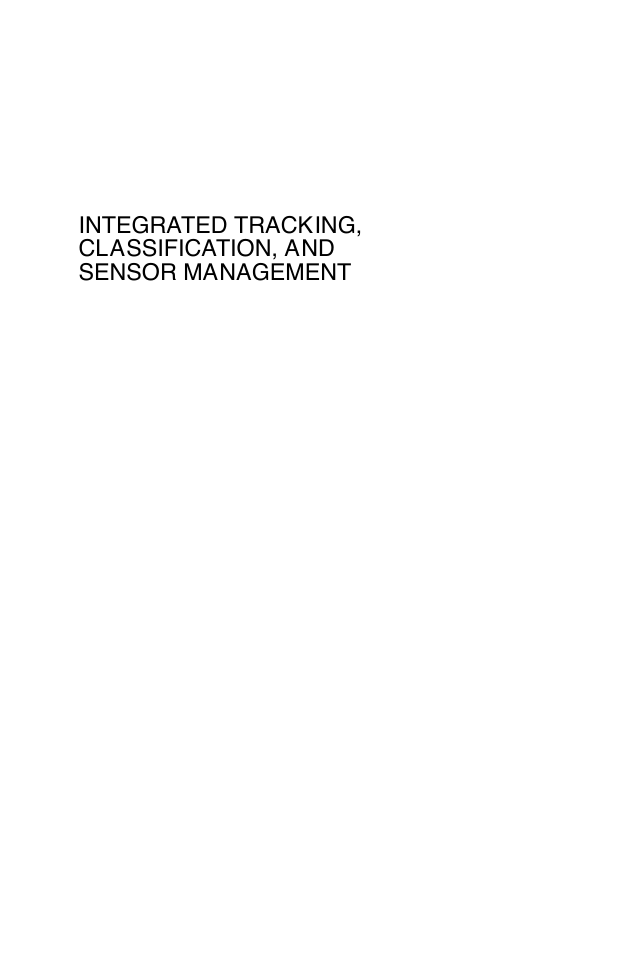
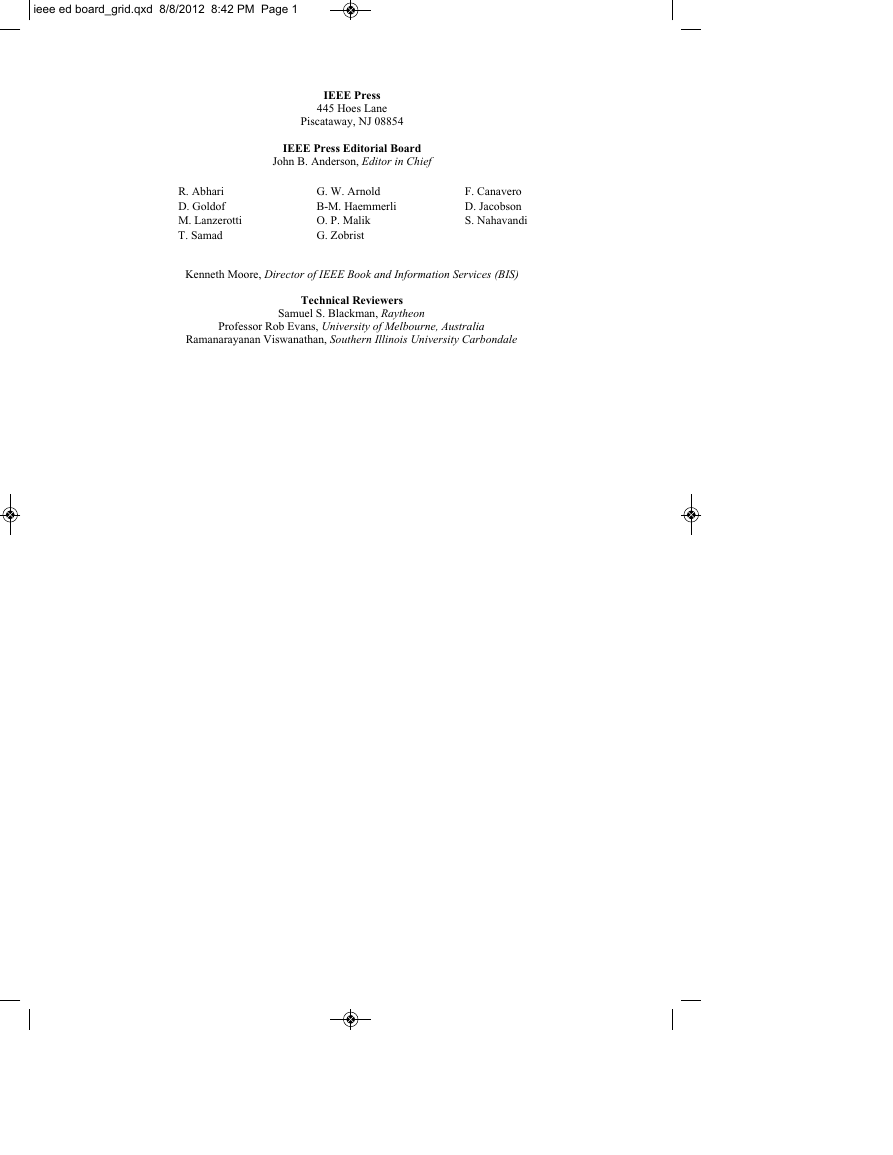
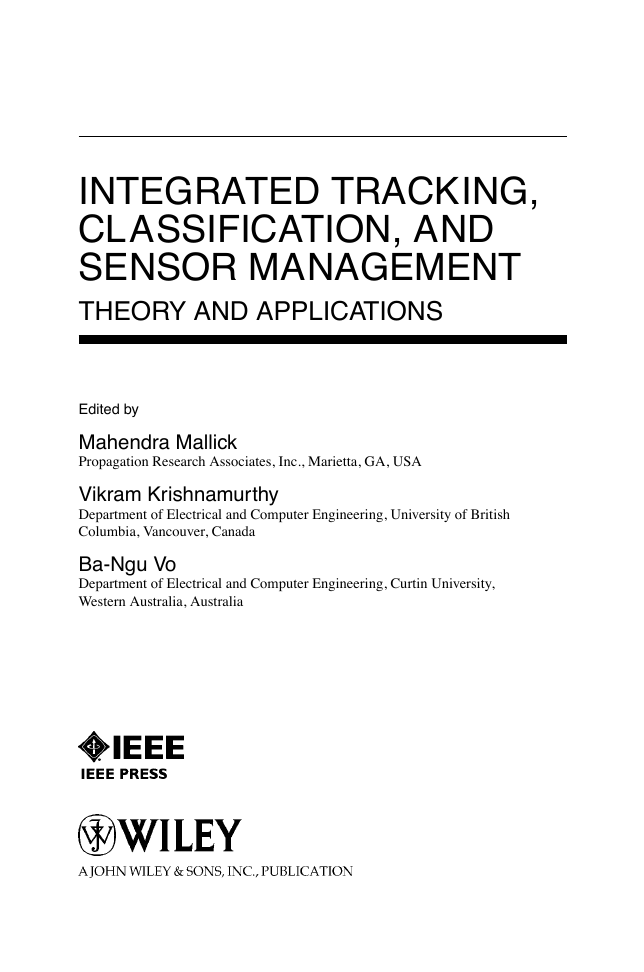
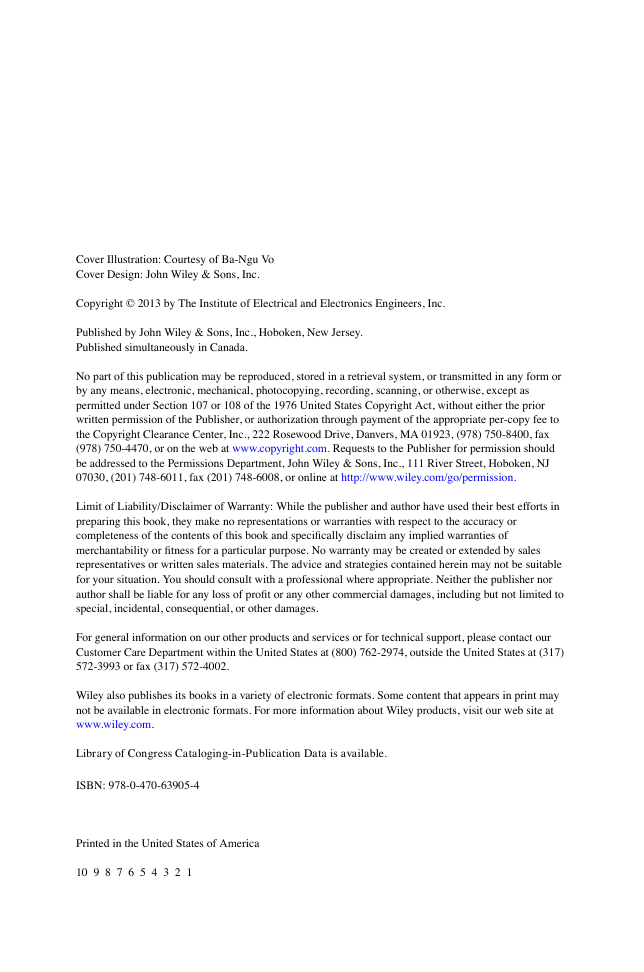
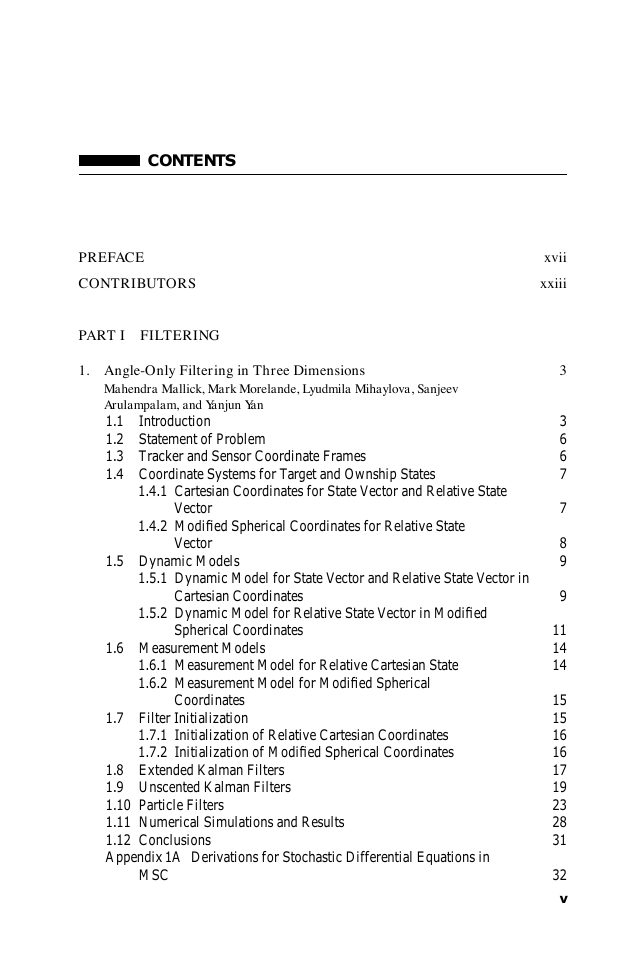
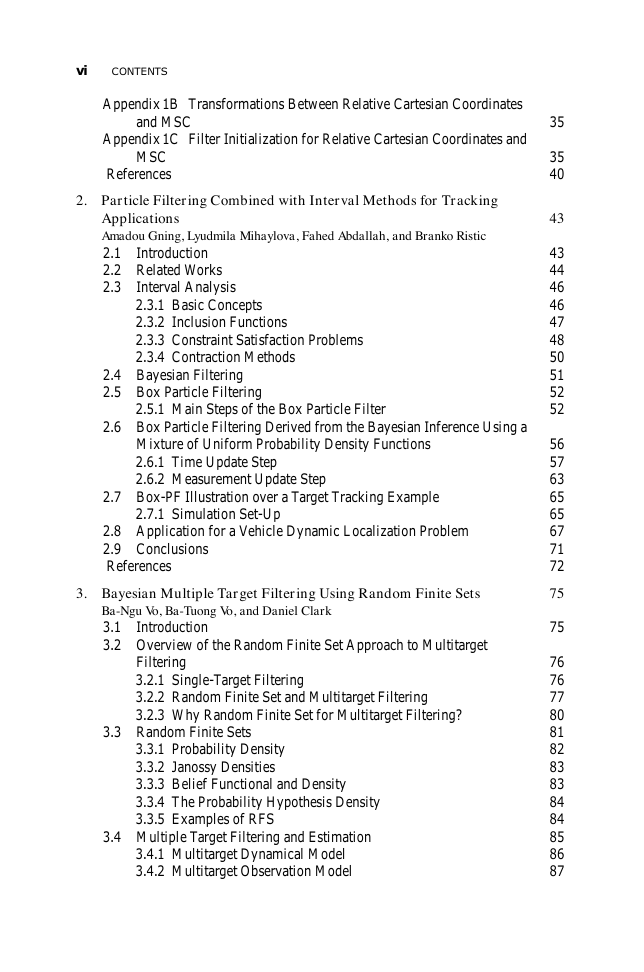








 2023年江西萍乡中考道德与法治真题及答案.doc
2023年江西萍乡中考道德与法治真题及答案.doc 2012年重庆南川中考生物真题及答案.doc
2012年重庆南川中考生物真题及答案.doc 2013年江西师范大学地理学综合及文艺理论基础考研真题.doc
2013年江西师范大学地理学综合及文艺理论基础考研真题.doc 2020年四川甘孜小升初语文真题及答案I卷.doc
2020年四川甘孜小升初语文真题及答案I卷.doc 2020年注册岩土工程师专业基础考试真题及答案.doc
2020年注册岩土工程师专业基础考试真题及答案.doc 2023-2024学年福建省厦门市九年级上学期数学月考试题及答案.doc
2023-2024学年福建省厦门市九年级上学期数学月考试题及答案.doc 2021-2022学年辽宁省沈阳市大东区九年级上学期语文期末试题及答案.doc
2021-2022学年辽宁省沈阳市大东区九年级上学期语文期末试题及答案.doc 2022-2023学年北京东城区初三第一学期物理期末试卷及答案.doc
2022-2023学年北京东城区初三第一学期物理期末试卷及答案.doc 2018上半年江西教师资格初中地理学科知识与教学能力真题及答案.doc
2018上半年江西教师资格初中地理学科知识与教学能力真题及答案.doc 2012年河北国家公务员申论考试真题及答案-省级.doc
2012年河北国家公务员申论考试真题及答案-省级.doc 2020-2021学年江苏省扬州市江都区邵樊片九年级上学期数学第一次质量检测试题及答案.doc
2020-2021学年江苏省扬州市江都区邵樊片九年级上学期数学第一次质量检测试题及答案.doc 2022下半年黑龙江教师资格证中学综合素质真题及答案.doc
2022下半年黑龙江教师资格证中学综合素质真题及答案.doc